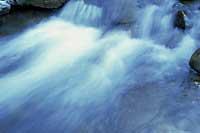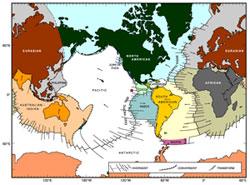Earthquakes water rivers
2003/03/19 Carton Virto, Eider - Elhuyar Zientzia
Some experts consider that the discharge to the rivers is water from the interior of the rocks. According to one hypothesis, the earthquake compresses and squeezes the rocks, while another holds that the earthquake causes cracks in the rocks by which the water is poured.

On the contrary, researchers at the University of California do not believe that rocks are the source of water. After several experiments, they have concluded that water comes out of the soil. When a strong earthquake hits the earth saturated with water, the pores are compacted and the water emerges.
Research has been conducted in California on the Sespe River. This region is one of the most active in the United States. There have been 48 major earthquakes since seismologists began to control the flow of the river in 1928.
In addition to monitoring river flow changes, researchers have generated earthquakes in the laboratory to know the response of the terrain. The results indicate that only earthquakes measuring more than 6 on the Richter scale could increase the flow of rivers.
However, some geologists consider that, despite the good idea, water accumulated in the soil is not enough to alter the flow of large rivers. Consequently, monitoring of aquifers is proposed. In fact, after the strong earthquakes there have been significant declines in the water level of the aquifers.

Gai honi buruzko eduki gehiago
Elhuyarrek garatutako teknologia





